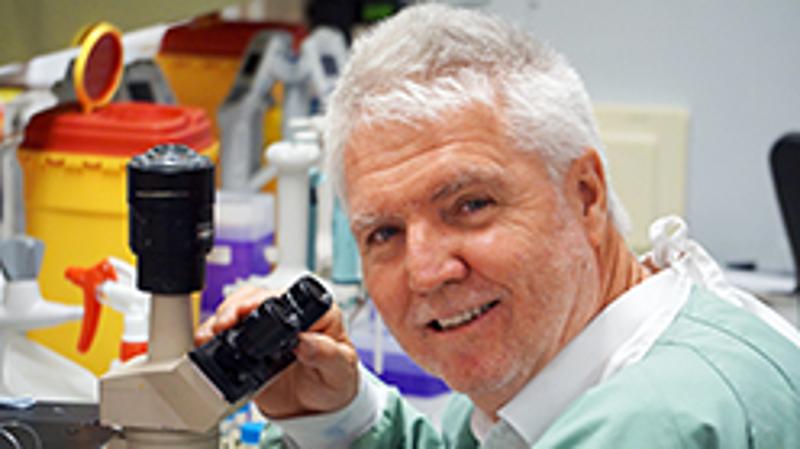
All women should learn the mammographic density of their breast tissue to make informed decisions on their breast cancer risk, a national breast cancer research group says.
The call comes after research has confirmed that extremely high breast density is associated with a four-to-six-fold higher risk of breast cancer.
Professor Rik Thompson and Dr Honor Hugo, from QUT’s Institute of Health and Biomedical Innovation (IHBI), are part of the national INformation FORum on Mammographic Density (INFORMD) alliance, made up of six universities and research organisations.
Professor Thompson, who has been working on mammographic density for six years, said the concern was that not only did high breast density indicate that a woman’s risk of breast cancer was higher, it also raised the difficulty in detecting cancer with a mammogram.
“Breast density is measured only with a mammogram which is an x-ray of the breast and is also referred to as ‘mammographic density’,” Professor Thompson said.
“Women’s breasts are made up of glandular tissue that show up as more or less dense on the mammogram, and fatty breast tissue which is dark on the mammogram.
“Low-density breast tissue appears dark on a mammogram and contains a high percentage of fat but high-density breast tissue shows up on a mammogram as white and bright, the same as tumour tissue.
“This is why a cancer can be missed or masked on a mammogram.
“Our QUT research contribution to understanding mammographic density, in collaboration with Princess Alexandra Hospital radiologist Dr Thomas Lloyd, is to learn more about which type of tissue comprises high-density mammographic tissue and the protein composition of high density tissue – how it differs from low density tissue.
“At present we do not know fully what influences breast density but most mammographic density is determined at adolescence and then modified over time by environmental factors such as having lots of children, which reduces breast density, and some hormone therapies which increase it.”
Professor Thompson said one aim of the QUT research was to find a non-invasive method to measure breast density without a mammogram so that women of all ages could easily be informed of their breast density and use it when making health decisions or monitoring therapy.
“We don’t want to scare women with high breast density, just inform them what we know about their risk of breast cancer and the extra care they should take because it is more difficult to discern breast cancers in dense breast tissue,” he said.
“High breast density doesn’t mean that you will get breast cancer.”
INFORMD members are from the Universities of Adelaide, Melbourne, Western Australia, and the Peter MacCallum Cancer Centre, as well as QUT.
"We've grown concerned that Australian women are not aware of the significance of breast density in the diagnosis and prevention of breast cancer," said INFORMD spokesperson Associate Professor Wendy Ingman, head of the University of Adelaide’s Robinson Research Institute’s Breast Biology and Cancer Unit.
Dr Alessandra Muntoni, National Breast Cancer Foundation investment research director, said the implication of breast density on breast cancer is still emerging as researchers learn more about this complex disease.
“In addition to funding research in this area, it’s important to ensure that knowledge is shared with women so they can make more informed decisions in future."
What can women do now?
• Mammography remains the gold standard for breast cancer screening. Have free regular mammograms through BreastScreen services across Australia.
• Women can have their breast density assessed through a mammogram, which can be arranged through their GP.
• Supplementary screening methods, including ultrasound and MRI, are available in addition to mammography. However, there are emotional and financial costs, and the risk of false positive results associated with these other technologies.
• Be breast aware. All women, regardless of age, can be familiar with their breasts and check them regularly. Any changes should be reported to their doctor.
Media contact: Niki Widdowson, QUT Media, 07 3138 2999 or n.widdwson@qut.edu.au
After hours: Rose Trapnell, 0407 585 901 or media@qut.edu.au.




